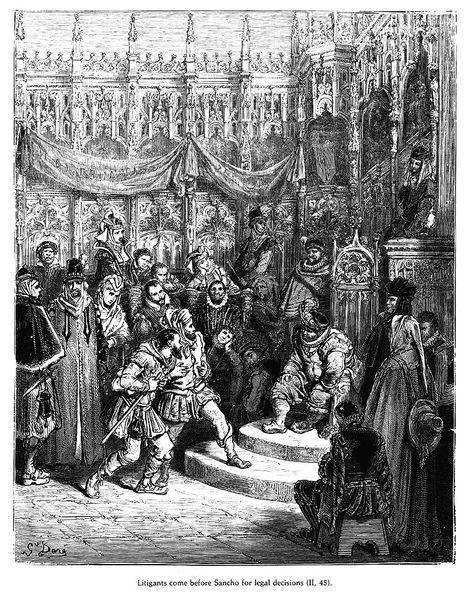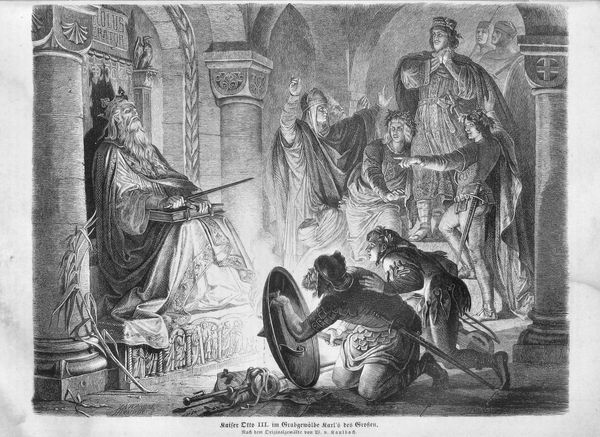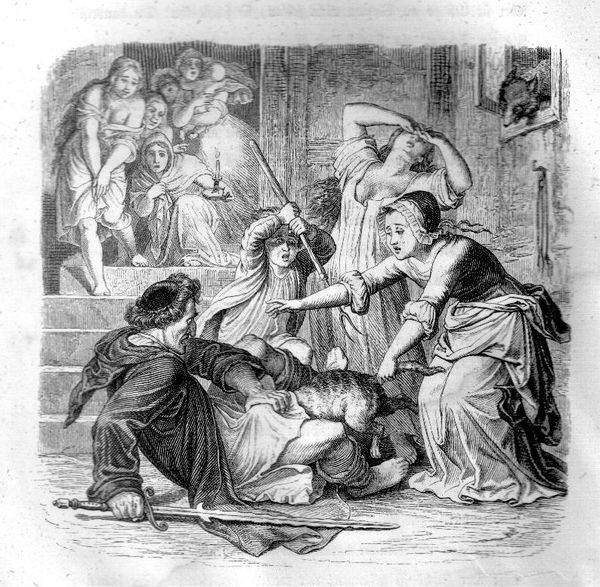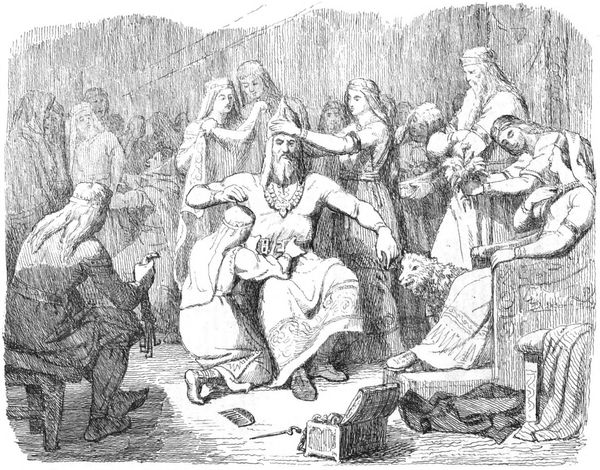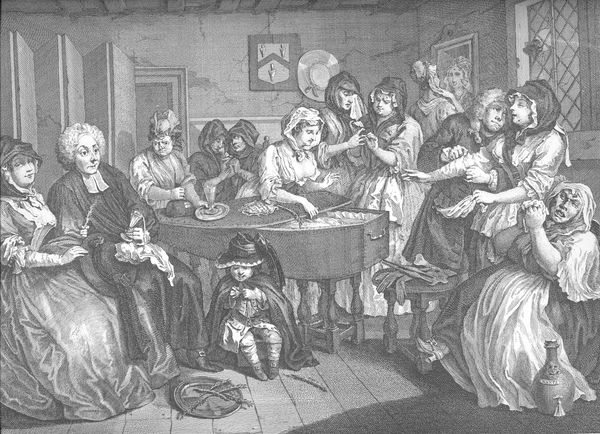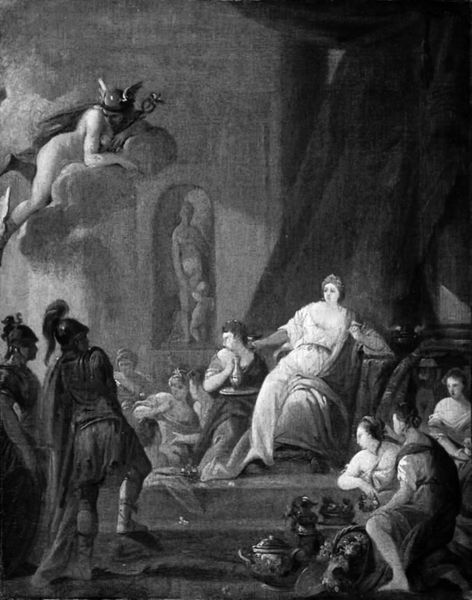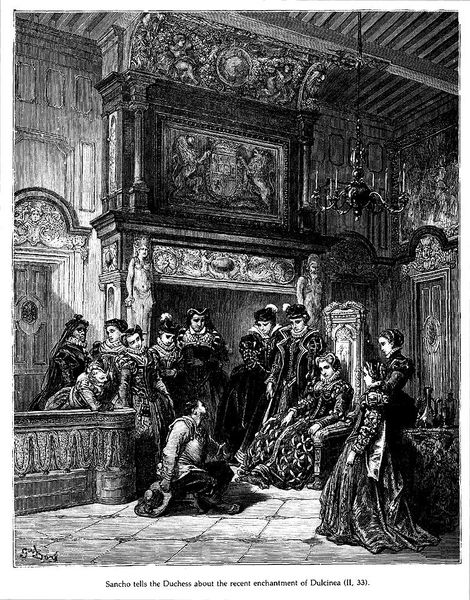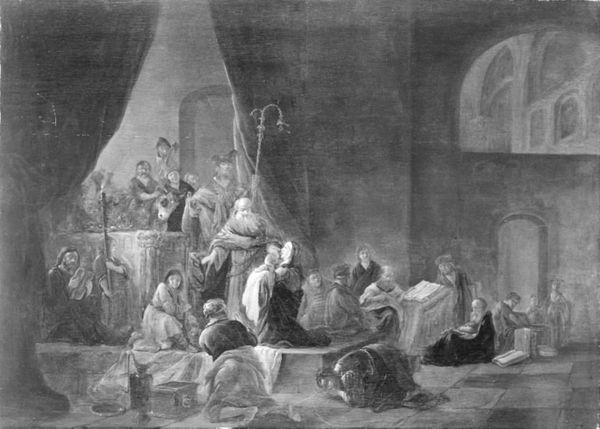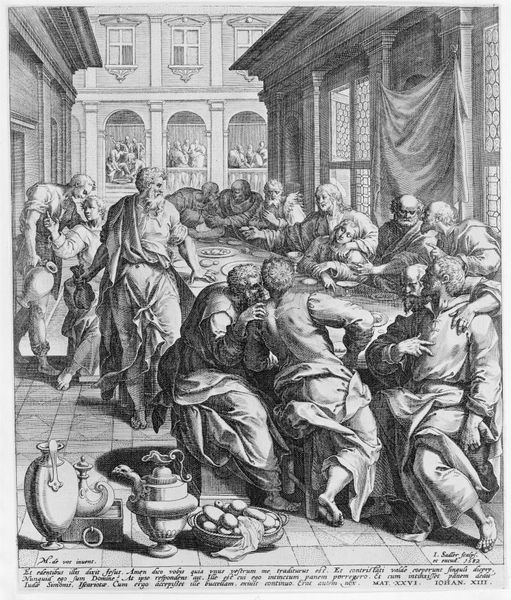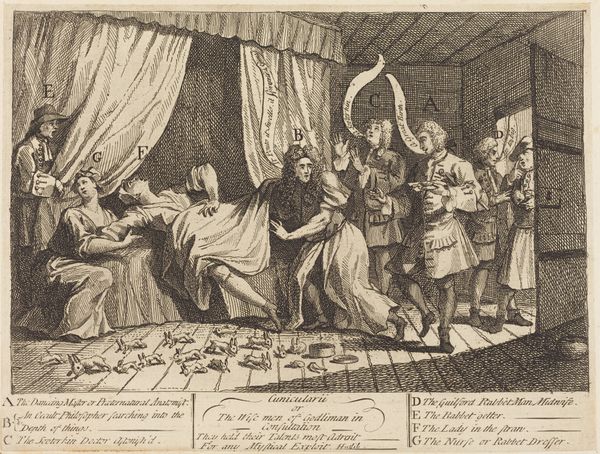
drawing, engraving
#
portrait
#
drawing
#
neoclacissism
#
sculpture
#
figuration
#
black and white
#
history-painting
#
monochrome
#
engraving
#
monochrome
Copyright: Public domain
Editor: Here we have a monochrome drawing titled "Performance of Iphigenia in Tauris" by Wilhelm von Kaulbach. It looks like an engraving, full of people in neoclassical attire. The mood seems celebratory, but with an underlying tension. What do you see in this piece that I might be missing? Curator: Beyond the surface of celebration, I see a representation steeped in complex socio-political undertones. Consider the play itself, "Iphigenia in Tauris" by Euripides, reimagined by Goethe during a time of burgeoning nationalism. How might the performance of such a classical text serve as a veiled commentary on the era’s social structures and evolving concepts of freedom? Notice the distinct separation and almost performative devotion of the female figures versus the men’s engagement. What statements could this be making about gender roles in this historical period? Editor: That's fascinating. I was mainly focusing on the composition, the clear separation of groups, and the theatricality of it all, but didn't consider it as a form of social commentary. The gendering aspect is particularly eye-opening! Curator: Exactly. By situating this artwork within its historical context and exploring the relationship between the narrative, its reception, and gender dynamics, we start to understand it as more than just a historical snapshot, it's a coded message. A document of complex societal negotiations and potentially even subversions played out within cultural spaces. What implications could be derived from considering the reception by the classes portrayed within the engraving? Editor: I never would have looked at it that way initially, seeing the cultural context reveals an unexpected and much deeper level. Curator: Indeed, and this piece, once observed beyond its monochrome surface, acts as a great springboard into larger discussions surrounding art’s capacity to be both a reflection of and an active participant in social discourse. We both can appreciate the artwork better, now!
Comments
No comments
Be the first to comment and join the conversation on the ultimate creative platform.


